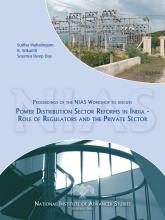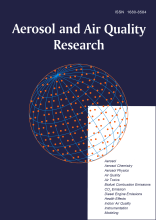Publications

|
Anindya Sinha The Day of the Macaque https://harpercollins.co.in/product/at-the-feet-of-living-things/ In: At the Feet of Living Things: Twenty-Five Years of Wildlife Research and Conservation in India (eds. A Datta, R Arthur and T R Shankar Raman), HarperCollins Publishers India Reminiscences of three decades of my research on bonnet macaques, "the performing monkey of south India" |

|
Sudha Mahalingam, R Srikanth, Soumya Deep Das co-authored Power Distribution Sector Reforms in India: Role of Regulators and The Private Sector https://cms.nias.res.in/sites/default/filesefs/2022-08/2208-EnergyProgramme-Report-DISCOMandRegulatoryReforms.pdf Workshop Report, NIAS/NSE/EECP/U/WR/20/2022 The accumulated losses of all State-owned power distribution companies (DISCOMs) have crossed Rs.5 lakh crore even after more than Rs.2 Trillion of their debt was taken over by the respective State Governments in FY 2015-16. The Government of India wants to pump in another Rs.3 trillion into these DISCOMs. This approach flags serious managerial deficiencies within the State-owned DISCOMs and the effectiveness of the electricity regulators in India. This report summarises the deliberations in a NIAS stakeholder consultation workshop. and the way forward for the power distribution sector. |

|
Anindya Sinha co-authored Beyond Food for Thought: Tool Use and Manufacture by Wild Nonhuman Primates in Nonforaging Contexts https://www.sciencedirect.com/science/article/pii/S2352154622001073 Co-authored with Arijit Pal, Current Opinion in Behavioral Sciences, Volume 47, Article No 101201 Tool use and manufacture by wild nonhuman primates in nonforaging contexts — an important indicator of their technical intelligence — is widespread across taxa, but is sporadic in occurrence, usually being displayed by one or a few individuals within a population and typically occurring in four contexts: aggression, communication and sexual display, hygiene, and in the modification of the environment. In this review, considering the relative rarity of nonforaging tool use in the wild, we recommend the development of standardised methodologies for long-term data collection under natural conditions and the establishment of novel experimental paradigms to conduct comparative studies on captive primates. |
| |
Sayan Banerjee En-gendering human-wildlife interactions in Northeast India: Towards decolonised conservation https://doi.org/10.2458/jpe.5217 Co-authored with Shalini Sharma, Journal of Political Ecology, 28 (1) The article discusses the gendered implications of living close to wild Asian elephants and how gender mainstreaming in conservation practice can streamline decolonised conservation |

|
Rudrodip Majumdar Formulation of Prediction Model for Working Fluid Temperature in a Vertical Paraboloid Shaped Thermal Energy Storage Tank during Stand-Alone Operation https://onedrive.live.com/?cid=c8b2b81032d987d1&id=C8B2B81032D987D1%2130959&ithint=file%2Cpdf&authkey=%21AOc-IbCEJAOJUyA Co-authored with Hitesh Khurana and Sandip Kumar Saha, Conference Proceedings, pp. 507-512 in Proceedings of 16th International Conference on Heat Transfer, Fluid Mechanics, and Thermodynamics (HEFAT-2022), Virtual Conference, 08-10 August 2022 |
| |
Sayan Banerjee Impact of wetland development and degradation on the livelihoods of wetland-dependent communities: A case study from the lower Gangetic floodplains https://trebuchet.public.springernature.app/get_content/1d88c0e6-4d81-463f-94c2-aba6396f7b53 Co-authored with Tiasa Aadhya, Wetlands, 2022, 42 (65) The article discusses people's perspective of wetland degradation due to (mal)development practices and its impact on their livelihoods and life. The study is located at a peri-urban wetland in the Lower Gangetic floodplains |

|
Rudrodip Majumdar Geospatial modelling for estimation of PM2.5 concentrations in two megacities in peninsular India https://doi.org/10.4209/aaqr.220110 Co-authored with Lavanyaa, V.P., Varshini, S., Mitra, S.S., Hungund, K.M., Srikanth, R. (2022). Geospatial Modelling for Estimation of PM2.5 Concentrations in Two Megacities in Peninsular India. Aerosol Air Qual. Res. 22, 220110. |

|
V P Lavanyaa Geospatial modelling for estimation of PM2.5 concentrations in two megacities in peninsular India https://doi.org/10.4209/aaqr.220110 Co-authored with Varshini, S., Mitra, S.S., Hungund, K.M., Majumdar, R., Srikanth, R. (2022). Geospatial Modelling for Estimation of PM2.5 Concentrations in Two Megacities in Peninsular India. Aerosol Air Qual. Res. 22, 220110. |
